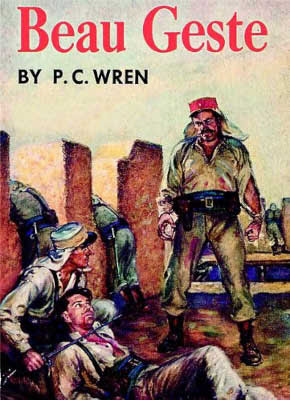Beau Geste
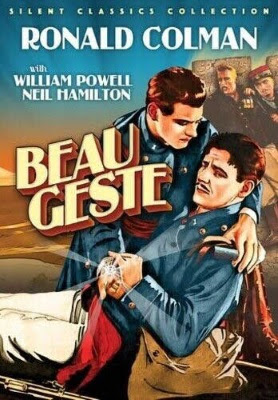
Director: Herbert Brenon
Year: 1926
Rating: 7.0
This is the first film adaptation of the P.C.
Wren novel of Beau Geste and his two brothers. It is considered one of the
great adventure tales ever written extolling British upper-class virtues of
courage, honor, sacrifice, brotherhood, fealty and a stiff upper lip in the
face of danger. Beau Geste has two meanings in the film but one of them is
simply a translation from French meaning beautiful gesture. I have never read
the book nor its sequels but have seen the two other versions. The Gary Cooper
1939 film which I recall as a teenager really got to me and the 1966 version
with Guy Stockwell which didn't. This one is quite well done with Ronald
Colman as the title character and a fine cast of Neil Hamilton, William Powell,
Noah Beery and Victor McLaglen. Powell in particular stands out as the venal
gutter rat Boldini. This being made in 1926, it is of course a silent film
and I must admit I often have trouble getting through silent films but this
one was all done in one-sitting and it felt like it sped through the story.
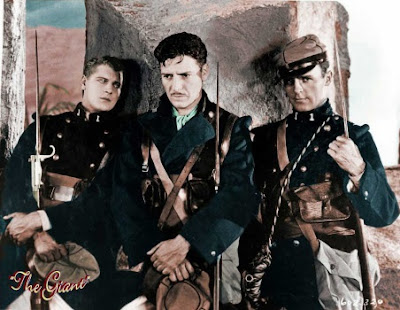
Beau and his two brothers, Digby (Hamilton)
and John (Ralph Forbes) have been brought up by their aunt in splendid fashion
living on her estate with not a trouble in the world and a future secure with
an education at Oxford. The family treasure is the Blue Water, an emerald
of enormous value. One evening the aunt brings it out to show them because
her absent husband is demanding it. The lights go off and when they reappear,
the emerald is gone. One of the brothers must have absconded with it and the
aunt tells them that it has to be returned by morning. Instead, all three
brothers separately write notes taking the blame and leaving. For the French
Foreign Legion.
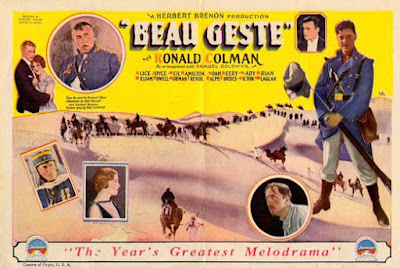
This part is told in flashback though.
The film begins with a French Legion relief command coming upon their fort
deep into the desert. All is quiet. The commander approaches the fort and
realizes all the men at their post are dead. A shot is fired from the fort
that forces the relief to pull back, He asks for a volunteer to go over the
wall. The bugler does and then he disappears. The commander follows and finds
everyone is dead and the bugler gone. A dead body is there and then it disappears
and then the fort is on fire. It is a wonderful beginning and worthy of an
Agatha Christie novel. The flashback gets us there.
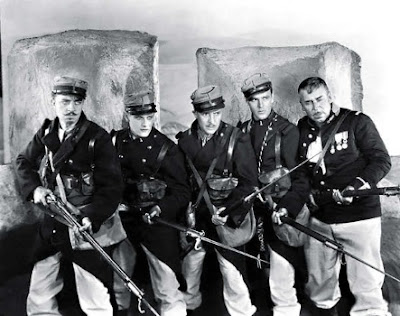
This was a large production from Paramount
with hundreds of extras in Arab gear attacking the fort as one man after another
is killed. The cruel sadistic Sergeant Lejaune (Beery) picks up each of the
dead bodies and puts them back on the wall. Paramount also produced the 1939
version which follows this film very closely. Today of course if they
were to do a remake, it would be blasted for colonization and imperialism
and the heroism and courage would be buried. So, I would not expect it, which
in truth is probably a good thing. Three versions are enough and views have
very much changed. Time has caught up with the Imperial films as they did
with Yellowface or stereotyped black performances. But this is still a grand
adventure. These types of heroic novels were written for impressionable children
in order to partly mold them - saying this is what manhood is, this is what
patriotism is, this is how Englishmen behave. When England had an empire.





